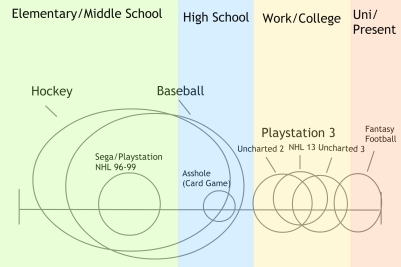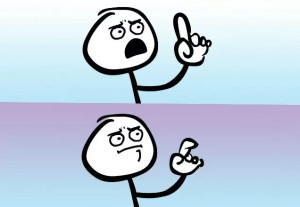
Here is a research essay I completed about a year and a half ago (originally submitted on Nov. 28, 2014). I hope that this is the last year its plea remains relevant. 4/20 comes around every year, and I am now more than ever considering the arguable sham that it is. Here people, many fellow university and college students in my city, can come out of their weed-smoking shell and partake in broad daylight, unmolested. But then it largely goes back to the status quo the next day. Why? Well, I think if this paper doesn’t answer this, it at least sheds a little light on the issue and helps expose some of the ridiculousness of the ambiguous legal standing of cannabis in Canada.
“The thought process behind demonizing something like marijuana is completely out of ignorance. [Where are] the bodies? [Where are] the numbers? Is there one? (Scorgie, Harvey, 2014)” Comedian and marijuana advocate Joe Rogan has been talking about the plant for more than a decade, particularly how our culture perceives it to be more dangerous than it actually is. And with three more American states recently legalizing marijuana, it seems its illegality needs to be re-examined on this side of the border. This is clearly one of the most contentious, but perhaps unnecessary, arguments of the last fifty years. Much of the information gathered points to the benign nature of marijuana — or cannabis. Moreover, its numerous medical benefits seem to warrant legalization in this way. If the question is “should marijuana be legalized outright?”, then some context regarding medical use, history of legal status, comparative effects, and economics needs to be provided to properly answer it.
The history of legal status and medical use needs to be examined to understand the tumultuous relationship between marijuana and the government. In 2005, Dr. Lester Grinspoon issued a statement to the Drug Enforcement Agency relating to a lawsuit by a University of Massachusetts professor who was denied a license to grow cannabis for research purposes. The incident led Dr. Grinspoon to issue the DEA a history lesson on medical cannabis. He cites that, “During its heyday, from 1840 to 1900, more than 100 papers were published in the Western medical literature recommending it for various illnesses and discomforts. (History of Cannabis as a Medicine, 2005)” Before its downright prohibition, doctors knew much about the benefits of this treatment, “more… than contemporary physicians do,” says Grinspoon. So what happened at the turn of last century? Doctors turned to synthetic drugs which were ostensibly more effective, entering the bloodstream at quicker rates than cannabis treatments. But, as Grinspoon explains, “the new drugs [aspirin, chloral hydrate, barbiturates, etc.] had striking disadvantages. More than a thousand people die from aspirin-induced bleeding each year in the United States, and barbiturates are, of course, far more dangerous. (History of Cannabis as a Medicine. 2005)” Still, these medications were preferred over cannabis, and the momentum for it as a medicine did not sway in its favour for quite some time after.
At this point, the first decade or so of the twentieth century, it seemed as though marijuana might make a medical comeback. This thought was quickly squelched, first by William MacKenzie King’s Canadian government in 1923 — who put ‘Indian hemp’ on the proscribed list along with heroin and codeine — and in the U.S. in 1937 by the Marihuana Tax Act, which required citizens to obtain a tax stamp to use marijuana medically and/or industrially. These stamps, however, were very difficult to obtain, as they were controlled by the federal government. From this came worry and frustration by physicians seeking access to marijuana. Eventually, interest was lost due to the government chokehold. Grinspoon laments, “Cannabis was removed from the United States Pharmacopeia and National Formulary in 1941.” But pushing cannabis out of society only lasted for a short time, and it came back into popularity as part of “The Hippy Movement” of the 1960’s. Suddenly people started to wake up from the hypnosis of a government outlaw. Since then, marijuana use in North America has been rampant, yet technically illegal. A troubling reality in Canada is the fact that marijuana is “illegal but often unenforced”, leaving the plant in a sort of legal purgatory.
One can see just how popular the cannabis industry is by examining the numbers. Ian Mulgrew, journalist and author of Bud Inc., presented figures from The Fraser Institute’s Stephen Easton regarding the industry in Canada. Among the statistics, Mulgrew cites this: “By 2000 — Easton figured — Canadian cannabis consumers actually spent $1.8 billion per year on bud. That’s almost as much as Canadians spend on tobacco — $2.3 billion.” Also surprising is Easton’s estimation that, “the [marijuana] industry was worth $5.7 billion wholesale and $19.5 billion if high-end retail pricing is assumed. That’s about the size of the Canadian cattle industry ($5.2 billion). (Mulgrew, 2003)” These estimates are from 2003, so one could assume the worth has increased significantly. Although surprising, these figures are also incredibly disheartening when examining the legal status of cannabis in conjunction. All this worth for a plant in high demand, with adequate supply, but one that is illegal and therefore untaxed. If it used tax revenue from marijuana sales, it is estimated that the Canadian government “would have a budget surplus of $2.7 billion” by 2014-15 (Flister, 2012). Conventional thought might suggest that this drug cannot be legalized and taxed because of the piles of evidence outlining its dangerous effects, and that society cannot have people making wages or building businesses based on such a harmful substance. This is not the case whatsoever.
The clear demand of the drug in the face of illegality, and illegality in the face of facts and evidence was and is troubling. Part of the legalization narrative includes perspectives on different drugs. In a British parliamentary poll, Professor David Nutt of Imperial College found that a majority of politicians, when asked if alcohol was a drug, said no. Why was this their answer? “Because it is not illegal,” Professor Nutt explains their rationale (Scorgie, Harvey, 2014). This stance reflects mischaracterization of and confusion about what a drug is. Science communicator Cara Santa Maria explains, “All illicit drugs get lumped together… caffeine is a drug, alcohol is a drug, Viagra is a drug… People, when they think of drugs, they think only of illicit drugs. (Scorgie, Harvey, 2014)” This leads to even more confusion about which drugs are more dangerous than others. One might think, ‘well, alcohol is legal… It must be less dangerous than marijuana.’ This is false. Regarding the danger of alcohol versus marijuana, addictions specialist Gabor Mate states, “..if I asked the question, ‘which of these has more potentially debilitating and harmful, life-threatening, health-eroding effects?’, there is no comparison. Alcohol wins, hands down. (Scorgie, Harvey, 2014)” So, alcohol “wins” in the overall danger category. What about the fear that marijuana use causes mental issues like schizophrenia? Unfortunately for fear-mongering prohibitionists, Dr. Grinspoon, Prof. Nutt, and Dr. Igor Grant of University of California-San Diego — to name a few — all found that there was no uptick in schizophrenia as marijuana use became more prevalent from the late 60’s to present day.
The case has been made that marijuana is not dangerous compared to other drugs, and it has also been found to be medically beneficial. Grinspoon cites that JR Reynolds, a 19th century British physician found cannabis valuable in treatment of conditions such as depression, asthma, and epilepsy (History of Cannabis as a Medicine, 2005). Jason David, father of a 7 year-old epileptic boy named Jayden, was administering 22 pills per day to his son, and was watching his son suffer up to 500 seizures per day. He turned to medical marijuana as a last resort, and began administering a CBD marijuana extract — “CBD is the stuff that doesn’t have psychoactive effects,” David explains (Scorgie, Harvey, 2014). When he did, his son’s seizures stopped completely . People like Ian Mulgrew have similar experiences with cannabis as medicine. “In recent years,” he explains, “I have lost three friends to various cancers. Each found marijuana the only effective medication for defeating the nausea of chemotherapy… Those experiences left me seriously questioning our public policy.” If these stories, and many others like them, are not enough to implement a new Canadian marijuana policy, then the country needs to reconsider its values. The medical cannabis industry wouldn’t just help an estimated 1 million Canadians, it could dwarf the economic projections of the recreational market, “perhaps $20 billion domestically,” Mulgrew states (Bud Inc., 2003).
When analyzing issues surrounding cannabis, such as medical validity, legal status compared to dangerous drugs, and economic benefits, it is evident that the plant should be legalized, at least for medical purposes. This issue could be boiled down to a battle of new ideas. Canadian author Mark Steyn writes “… any original thinking on almost any issue is likely to be controversial… That’s what makes free societies the most dynamic on the planet: they’re great big jostling marketplaces of ideas. (Shakedown, 2009)” The idea of making cannabis legal — and productive — may still be controversial, but maybe that is what makes it a good one.
References
Flister, L. (2012). The Economic Case for Marijuana Legalization in Canada.
Journal of Alternative Perspectives in the Social Sciences, 5(1), 96-100. Retrieved October 30, 2014 from http://www.academia.edu/2412227/The_Economic_Case_for_Marijuana_Legalization_in_Canada
Grinspoon, L. (2005). History of Cannabis as a Medicine. Retrieved October 25, 2014 from http://sbpatientsgroup.org/?page_id=35
Levant, E., Steyn, M. (2009). Shakedown. Toronto, Canada: McClelland & Stewart Ltd.
Mulgrew, I. (2003). Bud Inc. Vancouver, Canada: Random House Canada
Scorgie, A. (Producer), Harvey, B. (Director). (2014). The Culture High [Motion
picture]. Canada: BKS Productions, Score-G Productions





